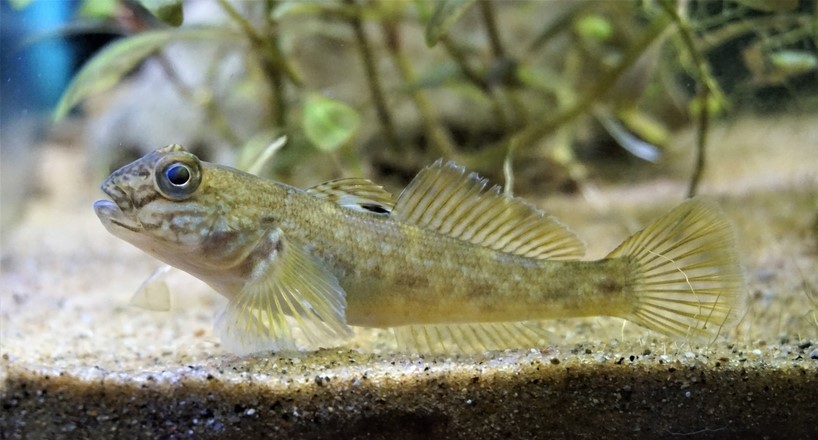St. LOUIS, Mo.—Missouri Department of Conservation (MDC) fisheries biologists say that the Show-Me-State has another aquatic invader to be on the watch for. This one has the potential to throw off the delicate ecology of our river and stream systems and threaten some of Missouri’s most popular gamefish. It’s already been detected in the Mississippi River near St. Louis—and anglers might be the first line of defense.
The round goby (Neogobius melanostomus) is native to the Black and Caspian Seas between Europe and Asia and was brought to the U.S. by way of the Great Lakes in cargo ship ballast. Since then, the invasive fish has made its way down the Illinois River and has been confirmed just across the Mississippi at Alton, Illinois. MDC fisheries biologists warn that it’s only a matter of time before we could be seeing them here.
“Round gobies are an exotic, invasive species that use the same habitats and foods as many of our native fish. This puts them in direct competition with our natives, some of which are already in decline because of other environmental factors,” said MDC Fisheries Management Biologist Sarah Peper.
Compounding the problem is that round gobies are highly aggressive foragers, known to voraciously raid fish nests and eat eggs. These fish also have an enhanced ability to detect water movement, which allows them to feed in complete darkness, giving gobies yet another advantage over other fish in the same habitat.
Already detected in the Mississippi River system, the invasive round gobies could enter the Meramec River as well. “The Meramec is the first major tributary downstream of where they have been found in the Mississippi, and it has a predominately gravel substrate that the gobies seem to prefer,” cautioned MDC Fisheries Management Biologist Jen Girondo.
“Smallmouth bass in the Meramec would be the gamefish we’re most concerned about,” Girondo explained. “Although males guard and defend their nests readily, any distraction or temporary displacement, if an angler catches and releases a smallmouth for example, could allow the gobies enough time to consume most of the smallmouth eggs.”
The delicate Meramec ecosystem supports several river-bottom species of conservation concern that gobies might negatively impact as well, including crayfish, mussels, and darters. While gobies may not harm native freshwater mussels directly, the Meramec basin supports many native fish which serve as hosts for the 47 species of mussels known from the Meramec ecosystem.
“Native mussels have suffered many impacts, from sedimentation to pollution, and the invasion of round gobies could mean that even more species may become rare or lost altogether if their host fish are affected,” said MDC Scientist Steve McMurray.
Anglers represent the forefront of defense against the invasive round gobies. “Gobies must not be returned to the water,” stressed Peper. “Most importantly, gobies should not be transported for use as bait or any other reason. We would like for anglers to report any gobies they catch.”
Round gobies are three to six inches in length but can sometimes grow up to 10 inches. They have soft bodies with large round heads. Their lips are thick, and they have distinctive raised eyes that look frog-like. Young round gobies are solid slate gray, while the older fish are blotched with black and brown. The adults have a white to greenish dorsal fin with a black spot at the posterior base.
These invasive fish can easily be mistaken for native sculpins. One key difference is that the gobies have a fused bottom, or pelvic, fin. Whereas the pelvic fins of sculpins are separate.
MDC encourages anglers to take photos and email MDC with details if they encounter any round gobies. Gobies are illegal to possess or use as bait. Check bait buckets to prevent the accidental spread of these invasives. MDC recommends disposing of gobies by tossing them onto land, well above the shoreline, so they can become food for scavengers, bald eagles, and other birds of prey. Anglers should report the sighting and email photos to [email protected].
“Biologists want to track gobies as they move into new stream systems so we can monitor their impact on native aquatic fauna,” Peper said. “We may be able to find some way to mitigate the effects. And we certainly don’t want to aid their spread by moving them into new stream systems or impoundments.”



